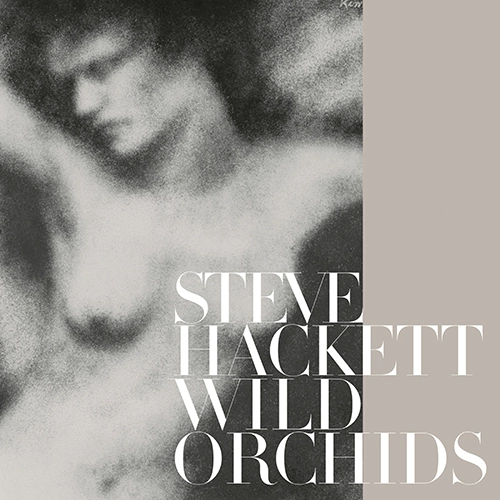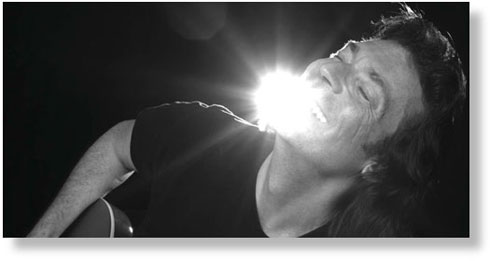- Article
- Read in 8 minutes
Steve Hackett – Wild Orchids – review
He is always looking for “unbounded places where culture meet and influence each other”, and it seems Steve Hackett has found some more of them. He proudly lets us admire the collection of Wild Orchids he has collected since his last band album…
He is always looking for “unbounded places where culture meet and influence each other”. Now Steve Hackett seems to have found some more of them. What’s more, he invites us to smell the collection of Wild Orchids he has been plucking on his musical journey after the last band album. It does not take wonder that he prefers the wild varieties of these usually cultivated plants because as his music they only grow off the beaten track. The idiosyncratic but accessible mixture of styles was what surprised and thrilled both fans and critics alike about his 2003 release To Watch The Storms. On this current release we are once more and in the most intriguing manner called upon to discover what links these songs. It is, admittedly, not a simple task after the first listening. Several repeats show clearly that it is the tour guide Steve Hackett himself who adds a special charm to the 72 minute journey.

The company is made up of Hackett’s current band, whom many appreciated on Storms and his recent tours (minus bass player Terry Gregory) and the Underworld Orchestra with whom he recorded Metamorpheus, an album of classical music, in 2005. Other fellow travellers are Hackett’s brother John (flute) and a guest and partner-in-crime from the days of yore, Nick Magnus on the keyboards.
Wild Orchids is released according to the dictate of the music market, that is, in a regular album version and a special edition with four bonus tracks, a slightly different sequence of tracks and a bigger booklet. The cover is (as usual) by Hackett’s wife, Kim Poor, and the album is (as usual) dedicated to her. And the songs?

Transylvanian Express
While the regular album opens with A Dark Night In Toytown (see below), the special edition begins with this bonus track. It actually is an instrumental version of the other song. Or rather, far more than ‘just’ an instrumental version. The parts of the piece are swapped around, instruments come in at other places, sound collages are modified or introduced, new elements are added … there is no need for drum beat or lyrics to get the listener through the insane ride on the “Ghost train to hell” in a refreshing manner. A mix of this and the vocal version could have been a remarkable “long track”.

Waters Of The Wild
Where are we in this song? Is it the Far, the Middle or Near East? We cannot say but neither Hackett’s former band colleague Peter Gabriel on his recent albums nor both their idols on The Beatles’ Sgt. Pepper gave a dang about it. Take a single deep bass note, exotic percussion loops and grooves, start to improvise with your voice, with the sitar and exotic wind instruments. Emerging melodies are repeated or underlined by a string section. Play some of the instrument tracks backwards and add thundering drums and you find yourself at the corner of The Silk Road from the previous album and the Beatles classic Tomorrow Never Knows. There is also a hint of I Know What I Like atmosphere. The song is a collaboration between Hackett and King.

Set Your Compass
Who would have thought that we’d get to hear the “old-fashioned” 12-string guitar on a Hackett album again? After all, he had firmly turned to the classical 6-string nylon guitar in recent years. This song brings back memories of Genesis’ Entangled (1976) and Hackett’s debut album Voyage Of The Acolyte. He must have felt the same way because, funnily enough, he quotes a brief passage from that album’s opening track Ace Of Wands. The vocals on this measured piece, which was written by the Hackett brothers, come in polyphonic splendour. They are only complemented with some piano bits and a bagpipe melody.

Down Street
This is the longest track on the album, and Hackett uses his by now familiar low-pitched voice again to take the role of a psychopathic narrator. He leads us into Down Street, the long since disused London Underground station that served as a secret air raid shelter during WWII. Zappaesque chaos leaves one almost dizzy. The song begins harmless enough with a dry groove perhaps borrowed from reggae, doubles speed to a funk piece featuring a rare thing on Hackett records, viz. funky guitar played by Roger King, before it leads via brief brass breaks into a solo part for guitar and mouth organ. Ghostly dub groove loops introduce a guitar riff that is taken up by the brass section who transform the overall impression into a swinging big band sound. When Hackett plays a blues guitar solo nothing indicates the imminent fun fair turmoil that ends in a brooding drum loop. A majestic orchestra brings this exciting song by Hackett and King to an end. What a number!


A Girl Called Linda
This song begins in the style of A Trick Of The Tail, the title song from Genesis’ 1976 album. It keeps breaking out into jazzy swing bits complete with flute solos (played by Rob Townsend) and acoustic jazz guitar.

Blue Child
The second bonus track on the Special Edition provides Hackett with an opportunity to improvise on his electric guitar at his heart’s desire. The background for this is made up of a relaxed groove and interesting harmonic changes played on the keyboard strings and Hammond organ. It is a melancholic bluesy piece, though not really a blues. This piece of music shows what many Genesis fans may have missed about the band since he left it.

To A Close
A sad song full of aery guitar picking and vocals for several voices. The sparing use of violins and flutes refine the song that had originally been recorded with the arrangement of its twin piece She Moves In Memories. These two were separated afterwards. The middle section features a beautiful and sad church organ.

Ego And ID
This song was written by John Hackett and Nick Clabburn and first released on John’s record Checking Out Of London (2005), on which Steve also played. The Wild Orchids version takes a different approach. The song oscillates between straight hard rock and some Floydian elements. Steve sang the vocal part, again pitching his voice deeper so that it does not really sound like him. There are plenty of guitar solos and old schoool Hammond organ played by the man who was at Hackett’s musical side from the end of the 70s to the mid-80s, Nick Magnus.

Man In The Long Black Coat
The big surprise on To Watch The Storms was the crazy Thomas Dolby cover. The biggest surprise on this album is another cover. It was penned by songwriting legend Bob Dylan and was released on Oh Mercy (1989), which was produced by Daniel Lanois who also worked with Peter Gabriel. It sticks close to the original. Hackett only changed the original “lost love” ballad to a version more suited to a band and perhaps more polished. He moves on unfamiliar ground between country music (slide and western guitar) and Irish folk (ukulele). Dylan’s edgy vocals are replaced by Hackett’s careless singing, certainly another first. Johnny Cash meets Peter Green meets Nick Cave. This song, minus the very atmospheric intro, is also available as a download single edit from Hackett’s web site.

Cedars Of Lebanon
This third bonus track from the Special Edition is quite tricky. It could be compared to some of the stranger single flipsides by Peter Gabriel. Distorted percussion grooves and weird string arrangements produce an unreal atmosphere. The vocals were originally to be done by Richie Havens. Hackett does not comment on the lyrics in the booklet, probably because of recent events in that area.

Wolfwork
A broad orchestral arrangement opens this song. The verses in distorted voices are accompanied by staccato string chords, just like some Beatles songs. Thundering drums and softer parts showcase typical Hackett melodies. The dark middle section is made up of a drum loop and a strong guitar solo.

Why
A short song of less than a minute proves that Hackett has not lost his humour. The piece was recorded with a rediscovered instrument called the Optigan in the style of Sentimental Institution complete with hilarious lyrics.

She Moves In Memories
This was originally meant to be the backing track for To A Close. It proved a good idea, though, to classify this number as a piece in its own right because the connections to that other song become apparent only after one has heard both songs a second time. Both songs could be superimposed and played at the same time, but She Moves In Memories displays a more romantic flair (complete with spring meadows and butterflies) than To A Close. She Moves In Memories could well be in a film score. The different melodies are taken up by both flutists, bass clarinet, trumpet and strings.

The Fundamentals Of Brainwashing
This is the next to last song on the standard edition of the album. It is hardly separable from the succeeding piece, Howl. Hypnotic piano chords and a slow drum groove accompany Hackett’s voice. Hovering choir vocals dissolve the somewhat oppressive verses, and comparisons to Pink Floyd’s The Division Bell or Hackett’s In Memoriam are not far from the point. The guitar solo is an obvious homage to the late Beatles guitarist George Harrison. The single edit available from Hackett’s web site closes with a bit from the next song.

Howl
Howl is marked as a separate song, but it rather is an extension of the The Fundamentals Of Brainwashing. Extensive, aerial solos on the guitar and the piano hover over a background of the hypnotic verse part. Remarkable how one can spend four entertaining minutes with only two chords.

A Dark Night In Toytown
Those who have seen Steve Hackett on his band tour in 2004 or own the tour DVD Once Above A Time will recognize this Hackett/King/Glück composition as If You Can’t Find Heaven. The song begins slowly like a lullaby, but after a few bars it turns into a terribly fast ride on the Ghost Train To Hell. Hammering drums are accompanied by hectic string bits. Hackett makes his guitar sing mightily above assorted effects, noises and bells.

Until The Last Butterfly
Hackett’s favourite nylon guitar has the final word, at least on the special edition. With its fast and typical Hackett guitar arpeggios it could as well have been put out on an acoustic album.
All in all…
Steve Hackett proves once more that it is possible to flirt and experiment with new musical directions without losing one’s own profile. Some listeners may feel cowed by the plenty of styles and sounds on offer, while others may appreciate this boundlessness. With the oscillations between band and orchestral sounds and electronic and production experiments Wild Orchids may be the closest thing to realization of Hackett’s musical visions. When one listens to this album one feels that this is not just another album but perhaps the most ambitious offering of Hackett’s whole career. One has to listen carefully and closely. This is not exactly news to seasoned Hacketeers, but certainly something that should be taken into consideration by those who are not too familiar with his musical output. If you liked the previous albums (or at least were not disappointed by them) this is an album for you – 72 minutes (standard edition: 67 minutes) of exciting music. Steve’s delight in experimental vocal effects, however, remains a question of personal taste.
by Steffen Gerlach
translated by Martin Klinkhardt
photos courtesy of InsideOut

